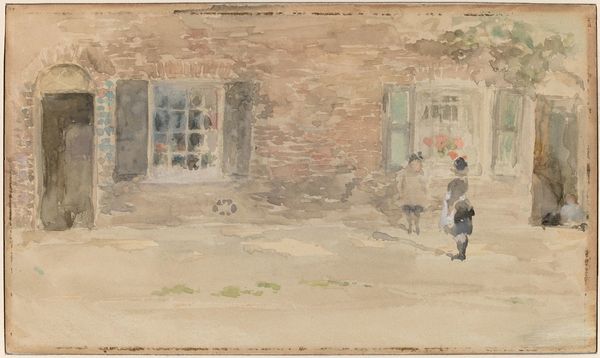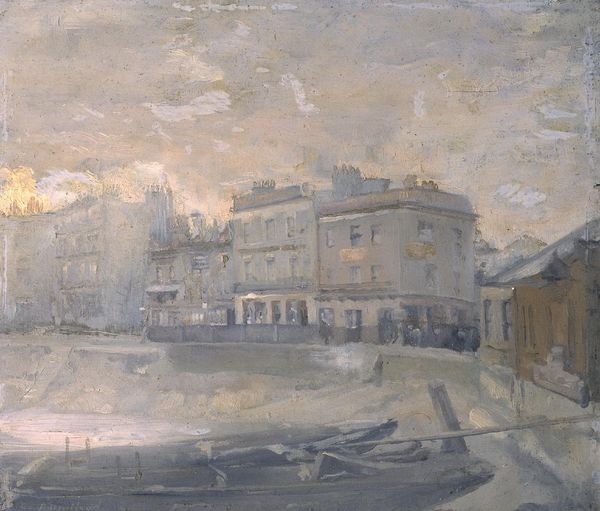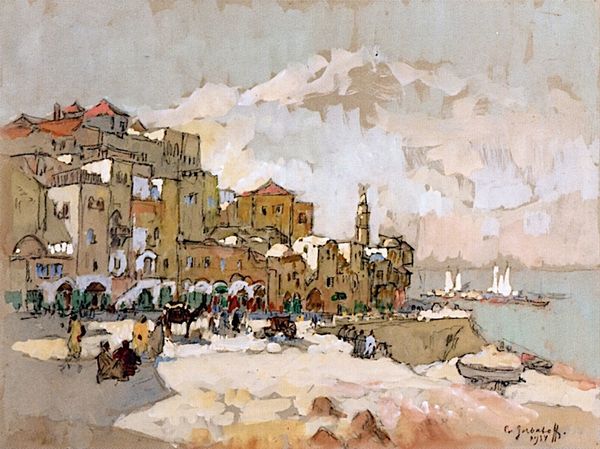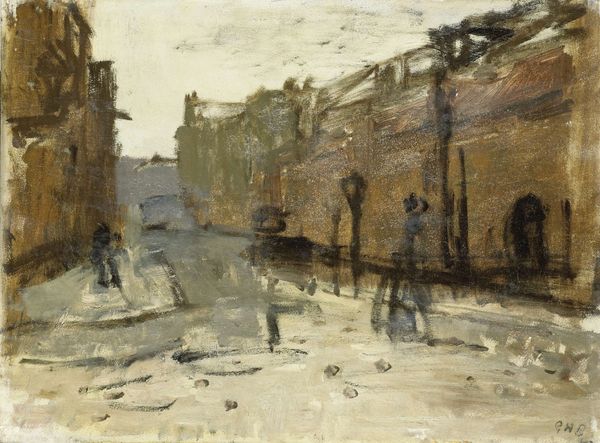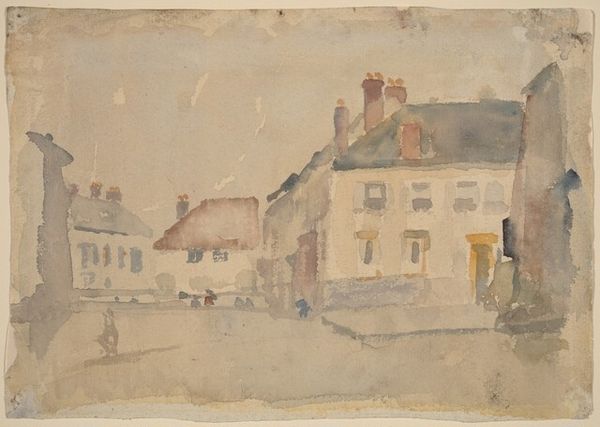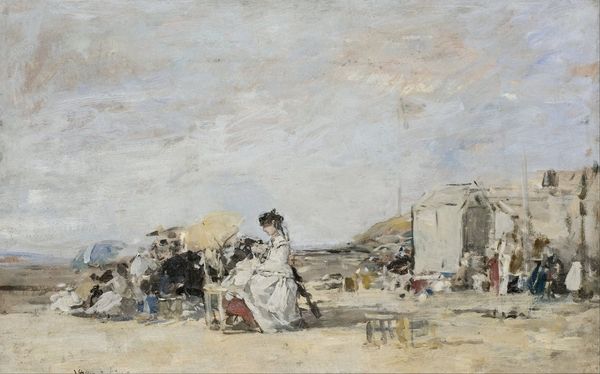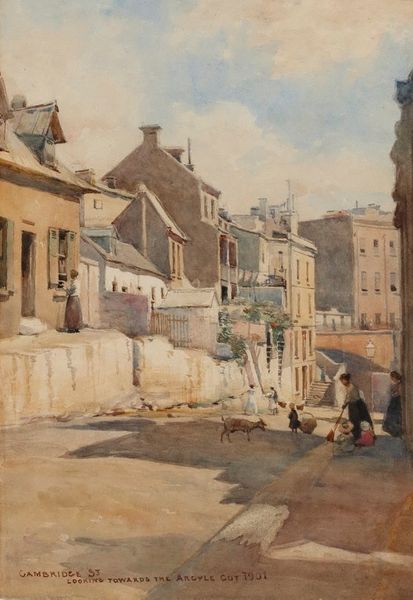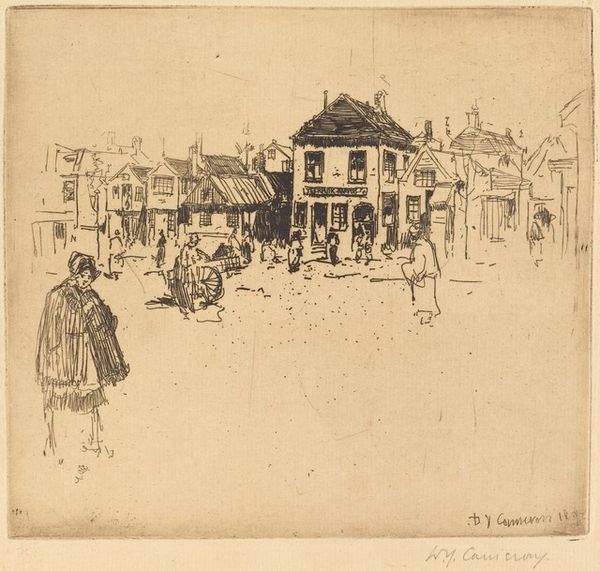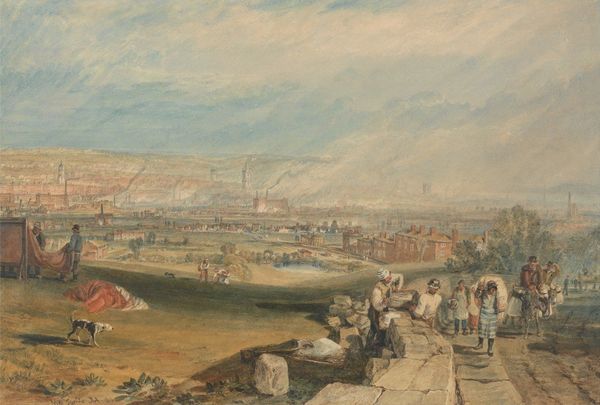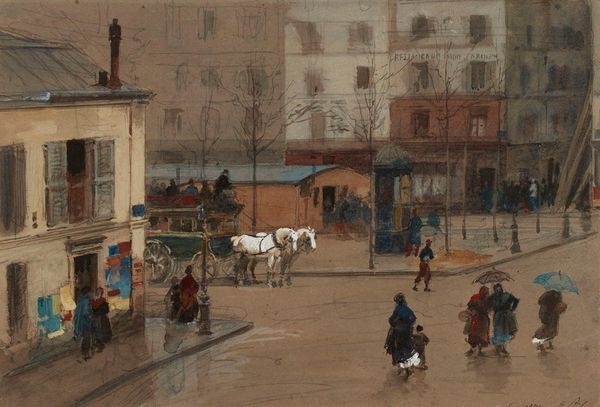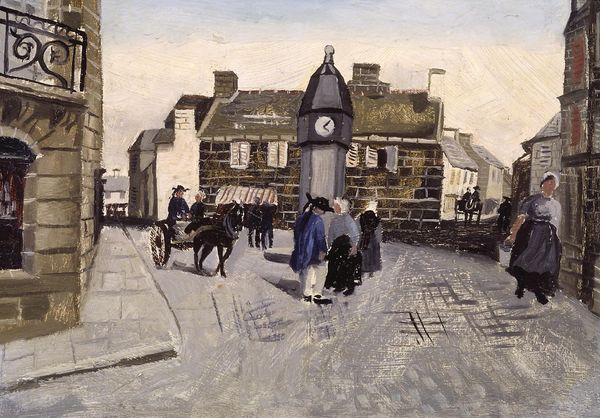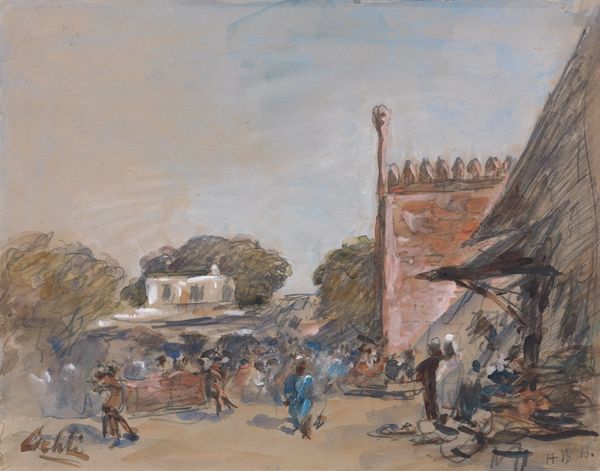
watercolor
#
water colours
#
impressionism
#
landscape
#
oil painting
#
watercolor
#
cityscape
#
genre-painting
Copyright: Public Domain: Artvee
Editor: This is Whistler's "Red and Brown-Hoxton," made around 1885-1886, a watercolor work that really captures a fleeting moment in a bustling cityscape. What jumps out at me is how he suggests so much activity with such delicate washes of color. How do you interpret this work? Curator: For me, this isn't just a depiction of a street scene; it's about Whistler's manipulation of materials to evoke a particular sensory experience of late 19th century urban life. Consider the brown paper – not a precious support, but an inexpensive, readily available material reflecting the democratization of art at the time. Editor: I hadn't thought of the choice of paper that way. Curator: Whistler is thinking about labor – the unseen work required to produce art, but also the working class present in his paintings, made visible here. Also, he's playing with watercolor in a non-traditional way. Note the transparent washes: the means of production are there, laid bare for all to see. Editor: That’s true. You can see exactly how he layered the colors. How does that tie into consumerism? Curator: The very act of creating art from readily available, inexpensive materials challenges traditional high art values. It speaks to the changing market for art, where production and consumption are closely linked, inviting us to question elitism in art production and encouraging access. Editor: I see what you mean. Whistler’s deliberate use of commonplace materials and visible techniques shifts the focus away from idealized beauty toward an engagement with everyday realities and artmaking processes. Curator: Exactly. He invites a new class of spectators to engage with art not for what it represents, but how it reflects society through his artistic means. Editor: Thank you. It is exciting to consider the production aspect along with its marketability and accessible materials. Curator: And in doing so, we understand not just the artist, but also the social and economic structures in place during this pivotal period in art history.
Comments
No comments
Be the first to comment and join the conversation on the ultimate creative platform.
